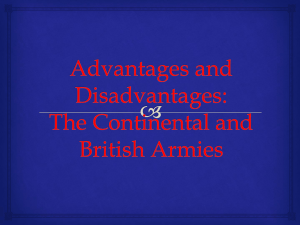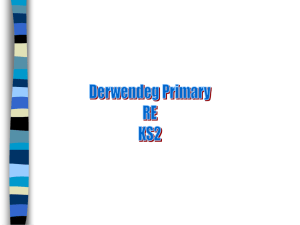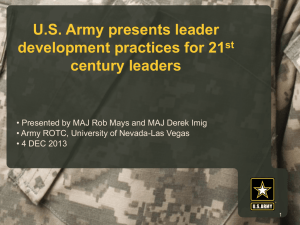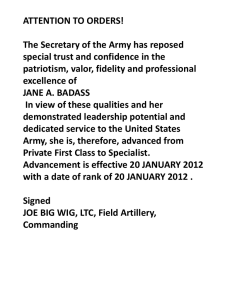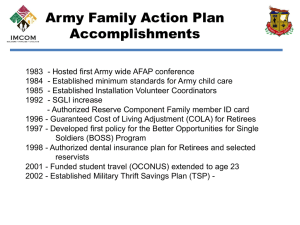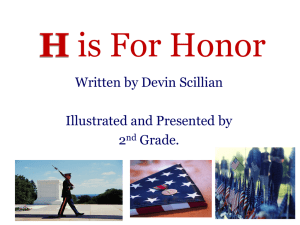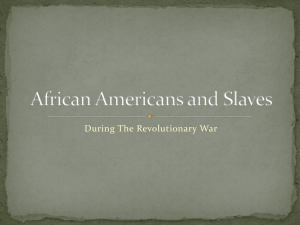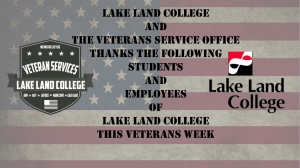Threats - Association of the United States Army
advertisement
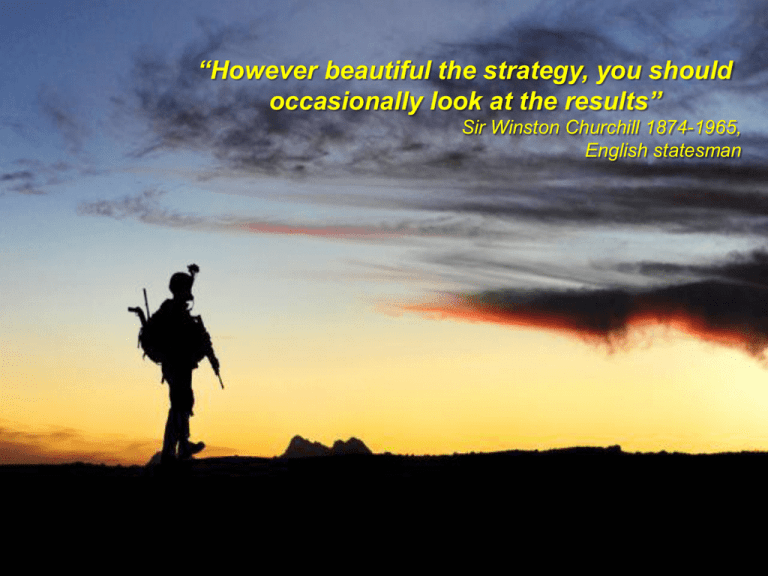
“However beautiful the strategy, you should occasionally look at the results” Sir Winston Churchill 1874-1965, English statesman Army 2020 Operational Environment Prevent Shape Win Futures Counter Terrorism and Irregular Warfare Deter and Defeat Aggression Project Power Despite AntiAccess/Area Denial Challenges Counter Weapons of Mass Destruction Operate Effectively in Cyberspace and Space Maintain a Safe, Secure, and Effective Nuclear Deterrent Defend the Homeland and Provide Support to Civil Authorities Provide a Stabilizing Presence Conduct Stability and Counterinsurgency Operations Conduct Humanitarian, Disaster Relief, and Other Operations The Probable The Possible The Unthinkable Global Trends Resource Competition Cyber Competition for Space Technology Proliferation A dynamic and rapidly changing security environment as of 09 1230 Apr 12 AUSA ILW 12 April 2012 2 A Wide Range of Potential Challenges Threats Criminal Organizations Terrorists Driven by Competition for: • Wealth • Resources • Political authority • Influence • Sovereignty • Identity • Legitimacy Shaping Forces: • U.S. Dominance • Radical Ideology/Theology • Technology Proliferation • Social Media access • Demographics • Economics • Cyber as of 09 1230 Apr 12 Transnational Groups Para-militaries Insurgents Near-states Proxies States Near Peers Unexpected opportunists and suppressed threats will emerge from conflicts in a complex environment Complex Environment: • Multiple Actors • No Controlling Actor • Asymmetric Threats • Chaotic Conditions • Extreme Complexity • Technology Enabled • Information Domain The Army must be operationally adaptive to defeat these complex challenges that will blur the distinctions of past conflict AUSA ILW 12 April 2012 Lethal: weapons technology proliferates to all forces, no longer linear relationship between econo mic and military power Enduring: persistent adversaries, difficult to defeat with blurred transitions from conflict to post-conflict. Asymmetric: sidestep U.S. preferred way of war, deny ISR and strike options, exploit cyber, protract conflict , and project conflict to the homeland 3 Character of Conflict in 2020 Threat components: Nation States or Proxies with a range of capabilities Desire to preclude U.S. from executing its “way of war” Capabilities that affect the strategic calculus -- missiles, nuclear weapons and terror sponsorship … specifically designed to impact U.S. actions JOAC ASB Capabilities: SAMs, MANPADs, ATGMs, Rockets, IEDs • Anti-access and area denial campaigns … strategic thru tactical levels • Engage at small unit level where they perceive a greater chance to obtain overmatch and achieve success Threats Gain/Maintain Access • Use violence, intimidation and coercion against U.S. supporters • WMD capable… but still seeking nuclear • Avoid detection and targeting by operating among the people • Slow down or halt our momentum using anti-tank missiles, IEDs, air defense and SOF • Increased use of robotics and unmanned aerial systems • Employ electronic warfare to counter US precision and C4ISR • Conduct sophisticated information campaigns designed to erode US will and support The Army must be capable of decisive action against a wide array of adaptive and complex threats as of 09 1230 Apr 12 AUSA ILW 12 April 2012 4 What the Army Must Do: Through the Lens of Defense Strategy Army also did missions outside this narrow lens Narrow Lens Deter Defeat Proxies Near States Criminal Organizations Terrorists CT/IW States Nuclear Presence Specific Threat Specific Location Specific threat, degree of certainty and location drove: HD/ DSCA Deter & Defeat Insurgents Cyber & Space Deterrence Defeat A2/AD HADR Counter WMD Stability/ COIN Project Power Doctrine Equipment Training Organizational Structure Force Posture Gain and Maintain Access Unified Land Operations Wide Lens Historic Examples: 1920-30s Rainbow Planning Airmobile Active Defense AirLand Battle Last decade: Counterinsurgency What the Army Must Do: Prevent, Shape, and Win: Strategic guidance requires the Army to conduct a wide range of missions while retaining the ability to focus more narrowly on projecting power to deter and defeat aggression once a specific threat emerges. The combination of a narrow focus within a wide lens allows the Army to adjust more rapidly to potential threats. The Army must maintain a high level of operational adaptability as of 09 1230 Apr 12 AUSA ILW 12 April 2012 5 Draft ACC: Meeting the Challenges 3-2 The Military Problem: Given the operational environment, What must the Army do to educate its leaders and organize, equip, and train requirements of strategy, and the units to protect U.S. national interests and Army’s role in the joint force ….. successfully execute the primary missions outlined inthe defense strategic 3-5 Components of the 3-3 Solution (What Army Must Do): guidance? Central Idea: • Prevent conflict: Train, equip, and posture capable and 3-6 Supporting The future Army must develop operational adaptability – a qualityIdeas: that Soldiers credible forces to deter adversaries • Projectcomfort military with powerambiguity despite antiand leaders possess based on critical thinking, and • Shape the operational environment: Provide a sustained, access/area decentralization, a willingness to accept prudent risk, denial and anchallenges ability to make stabilizing presence to gain access, understand the operational rapid adjustments based on a continuous• Align assessment of the situation. forces regionally environment, build partner capability, and set conditions for • Enhance advisory capabilities • Operationaloperations; adaptability requires: integrate special operations and conventional • Conduct cyber and space operations • Resilient Soldiers and cohesive teams forces • Establish war termination objectivesd • Mastery of decisively the operational art • Win and dominantly: Deploy forces, prevail in • Adapt force generation and maintain an and defendall theavailable homeland capabilities in support of joint force • Ability war to combine operational reserve commanders • Flexible organizations and adaptable• Preserve institutions and enhance the all-volunteer force Desired End State: An Army that has the ability to rapidly deploy forces and conduct a wide range of missions including shape, which requires forces to gain, sustain, and exploit physical control over land and resources, defeat enemies, and exert influence over people by physical and psychological means. as of 09 1230 Apr 12 AUSA ILW 12 April 2012 6 Major Army 2020 Ideas Redesign Brigade Combat Teams Review Logistics Concept of Support Create a New ARFORGEN Model Maintain an Operational Reserve Create Reconnaissance and Surveillance Brigades Project Power Despite Anti-Access/Area Denial Challenges Create Regionally Aligned Forces Integrate Special Operations and Conventional Forces Improve Echelons Above Brigade (EAB) Mission Command Assign / Align Brigades to Divisions and Corps Enhance Army Advisory Capability Implement a New Tactical Wheeled Vehicle Strategy Ensure Reversibility and Expansibility Transition from today’s force to the Army of 2020 in an era of fiscal austerity and still accomplish all that the Army must do as part of the Joint force as of 09 1230 Apr 12 AUSA ILW 12 April 2012 7
